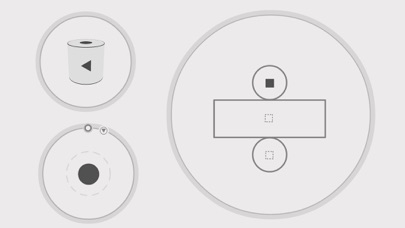
-unfold- is a spatial ability trainer puzzle game. There is no time limit, move limit and points in the game as our successful game "-look-". You just need to match the geometric shapes into the corresponding pieces.
-unfold- is waiting for you to train your spatial ability. Ready?
Features:
◈ Minimalistic design
◈ 50 mind-blowing levels
◈ Relaxing music & sounds
◈ Enhances 3D thinking
◈ Sharpens the mind
◈ Exclusive for iOS
WHAT IS SPATIAL ABILITY?
Spatial ability is "the aptitude needed to mentally process three-dimensional images of objects." (Fleisig et al. 2004).
WHY IS SPATIAL ABILITY IMPORTANT?
"There is evidence which indicates that strong spatial skills are required for achievement in science, technology, engineering and mathematics (STEM) careers. Many people, including science and engineering professors, view such skills as important for success in fields like engineering." (Gutierrez, Dominguez, & Gonzalez, 2015)
CAN SPATIAL ABILITY BE FURTHER DEVELOPED?
"The level of spatial performance someone is capable of may change over time. You are likely to gain in performance through practice, training, and learning, but you may also lose in standing relative to others if they acquire more experience that supports their performance or make more progress in their intellectual development." (Johns Hopkins University, 2018)
If you wish to improve or retain the level of your spatial ability, -unfold- will be the best option for you.
Fleisig, R. V., A. Robertson, et al. (2004). Improving the Spatial Visualization Skills of First Year Engineering Students. Inaugural CDEN Design Conference, Montreal, Quebec.
Johns Hopkins University. (2018, August 28). Spatial Ability. Retrieved from http://www.jhu.edu: http://web.jhu.edu/cty/STBguide.pdf
Martin Gutierrez, J., Garcia Dominguez, M., & Roca Gonzalez, C. (2015). Using 3D virtual technologies to train spatial skills in engineering. International Journal of Engineering Education, 31(1), 323-334.



